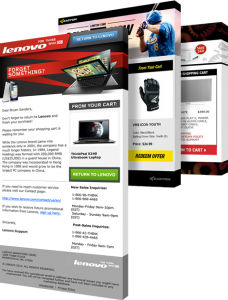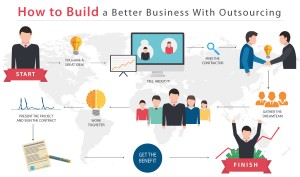As a business owner you realize the importance of accepting credit card payments, but you may not realize what a payment processing level means for your business. This is especially true for B2B transactions.
While accepting payments like checks and money transfers are common, most companies would rather pay via credit card. Card transactions also provide benefits for the merchant. Research shows that buyers who pay with credit cards typically spend more on their purchases. This can obviously boost a company’s bottom-line and improve cash flow.
The main concern among B2B merchants is the cost of the interchange fees that come with processing credit cards. Most merchants end-up paying far too much for these fees. This extra cost is in consequence of many owners not completely understanding interchange fee charges.
Some businesses don’t know how to reduce overhead payment processing fees. With B2B merchants they may end up paying more than they should when they aren’t set up for another payment processing level like Level 2 or Level 3 credit card processing fees. Level 2 and Level 3 happen to be cheaper.
What exactly is Level 2 and Level 3 processing? How can you get setup for Level 2 or 3 credit processing? What does this ultimately mean when it comes to a payment processing level?
Breaking Down Level 1, Level 2, and Level 3
Before diving deeper into Level 2 and Level 3 interchange rates, let’s quickly go over interchange rates in general.
No matter the size or type of the business, if you accept payments through credit or debit cards then you’re going to have to deal with interchange rates.
In a previous Due post, James Stoner explains interchange fees. “These are charges that a merchant’s bank account must pay the card-issuing bank for card usage. Visa, MasterCard, and Discover charge the merchant when a customer uses their credit/debit card for a purchase. This fee was put in place in order to cover handling costs, fraud, bad debt costs, and the risk of approving the transaction.”
Visa and MasterCard set-up these fees. Fees are updated at six monthly intervals in April and October. The prices can go up or down (which way do you think they typically go)?
These fees will vary depending on the nature of the transaction, card type, card brand, type of business, and business size. Several changeable factors determine the cost of the fees. This is why some merchants don’t know exactly how much they’re paying in interchange rates.
Interchange rates are a necessary evil of doing business. B2B merchants can save a considerable amount on their credit card processing fees by qualifying for B2B interchange rates.
To qualify for these B2B interchange fees, merchants provide a string of additional information to go with each transaction. Visa describes the data required for Level 2 and Level 3 data as enhanced data. The higher the level, the more the data the merchant will have to provide.
There are three different levels of data:
Level 1 data is standard with all transactions and refers to business-to-consumer (B2C) transactions. It consists of basic information like the card number, the dates data, the CVV2 code. Many require the zip code as well as the merchant name, transaction amount, and amount needed.
Levels 2 applies to corporate, commercial, government and B2B transactions. This level requires all of the Level I data, and in Visa’s case they require the following information:
- Sales tax
- Sales Tax indicator
- A customer code
- Purchase ID
- Purchase ID format
Level 3 payment processing is typically for larger transactions. This means that it requires more detailed information. This includes a summary data and line detail information.
In Visa’s case the credit card company also asks for:
- All the Level 1 and Level 2 data
- Destination country code
- Shipping/courier charges
- Discount details
- Date of order
- VAT information/reference number
- Country code destination
- And Zip code for delivery/sending
Level 3 line entry information required consists of:
- Level 1 and Level 2 data
- Commodity and product codes
- Unit cost/charge
- VAT details
- The units sold
- Quantity
- An item description
MasterCard calls this information data rate and some of the information that is asked for is slightly different. For example, MasterCard will request a tax amount to be given.
Typically, you’ll have 15-20 fields – regardless of the credit card company. There are even some cases where there may be around 100 different fields.
Submitting this additional information is required to qualify for Level 2 or 3 interchange fees. But this isn’t always easy for the retailer to uncover. The reason?
Most terminals don’t automatically prompt the merchant for the information. Gathering this extra data need not be challenging as long as your provider offers B2B credit card processing. As such, they’ll pass this data along to you.
Potential Savings When Submitting Level 2 and Level 3
You’re not obligated to submit this additional data. However, CardFellow.com estimates you could save up to 1.15 percent by qualifying Level 2 and Level 3.
For example, consider if the MasterCard Corporate Rate 1 is 2.65 percent plus 0.10 cent fee. The merchant submits the Level 3 data, they would only pay 1.75 percent plus a 0.10 cent fee for that transaction.
With Visa, cards are charged 2.05 percent rate plus a 0.10 cent fee for Level 2 data. But, Purchasing Level III and Corporate Level III are set at just 1.95 plus 0.10 cents.
You don’t have to be a math wiz to see the potential savings here. US-based B2B companies are paying an average of $ 2.2 million in credit card processing fees for every $ 1 billion of revenue.
So, why don’t more businesses take advantage of this?
The main culprit is that B2B are using payment processors that don’t have the experience in managing B2B credit card payments. As a result, their terminals are not properly setup to accept them.
The Growth of B2B eCommerce
There is a savings that Level 2 and Level 3 can provide. Growth is predicted in B2B eCommerce range and is another reason to accept B2B credit card payments. According to a report by Forrester, it’s anticipated that that by 2020, B2B eCommerce will exceed 1.1 trillion and will make up 12.1 per cent of B2B sales.
Other information and key findings are in the Forrester report. It states ending in 2017, more than half of B2B buyers will buy at least 50 percent of their company purchases online.
Making purchasing easier for customers, B2B merchants will benefit from lower fees. Customers can self-serve with an online presence in addition to a physical store and the merchant can take advantage of multichannel sales.
How to Reduce Your Payment Processing Fees
What if you don’t qualify for Level 2 or Level 3 payment processing? After all, interchange rates aren’t cheap for North American retailers, what with an average fee of 1.76 percent compared to just 0 .96 per cent for their European counterparts.
For eCommerce stores based in the US and Canada it’s not much better since they’re charged 2.13 percent per transaction.
You can try out these suggestions to reduce your payment processing fees:
- Offset some of your fees by adding a surcharge for transactions. This isn’t popular among your customers. It can also get complicated (it’s also illegal in some states), but it’s an option if your processing fees are out of control. Seek legal counsel before going this route.
- Large companies that have high volumes of transactions are in a better position to negotiate a more favorable deal with their merchant services provider. This is because you’re providing value to them.
- Consider changing your credit card company to a credit card company that has more favorable interchange rates.
- Process payments in-house instead of using a bank as a middleman.
- Reduce the risk of credit card fraud by asking customers to enter their CVV or zip code to authorize a payment.
- Go green by receiving statement through email instead of paper-statements sent via snail mail.
- Hire a credit card processing expert. They can share their insider information to obtain lower processing fee rates.
The Bottom Line
By reducing unnecessary credit card processing fees you can increase your business’s profits Unfortunately, not all retailers are aware of the potential savings that they could be making simply by including the additional Level 2 and Level 3 data.
Submitting this additional data with these transactions may seem like an additional administrative burden. But it definitely makes a financial difference if you are accepting high volumes of B2B credit card transactions.
To reduce credit card processing fees, B2B merchants need to be aware of the interchange fees that they are paying. Along with knowing if they are not already benefiting from the reduced fees associated with Level 2 or Level 3 interchange rates. It’s a good idea to take a closer look at financial data to determine the potential savings.
Although including this data might seem like an additional task, specialized terminals means that it doesn’t have to be as time consuming as imagined.
Business & Finance Articles on Business 2 Community
(82)
Report Post



